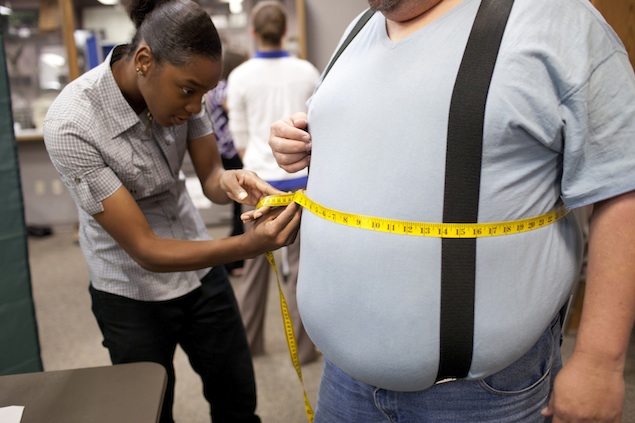It’s impossible to dispute the fact that obesity is a ticking time bomb in America, with almost 70 percent of adults now overweight or obese. In the first half of its new four-part documentary series, The Weight of the Nation, HBO lays out several facts we already know. First, obesity is endemic. Second, it’s an enormous problem for the future workforce of the country. Third, it’s a vast drain on the economy, costing $150 billion a year to treat, around half of which is funded by Medicare and Medicaid. But what the series delves into in detail, and what isn’t such a commonly held view, is that it isn’t all our fault. We’re simply not designed to thrive in the environments we currently live in.
By pointing the finger of blame away from obese individuals, may of whom are demonized as greedy or lazy, HBO is doing something that feels revolutionary, even if it’s old news to anyone who’s ever watched Food, Inc. or read Michael Pollan or Mark Bittman. TV shows such as The Biggest Loser emphasize personal responsibility (last season’s theme was “no excuses”), and tout corporate sponsors from Subway to Jennie-O turkey. But as The Weight of the Nation explored briefly in its first episode, “Consequences,” and looks into in more detail in tonight’s episodes, the problem is more complicated. As human beings, we’re designed to live as hunter-gatherers, with our synapses programmed to go haywire for high-calorie, high-fat foods that’ll sustain us in times of hunger. In a world in which food is plentiful, we’re simply not equipped to eat in a way that’s best for us. Or as one participant put it, “You don’t crave broccoli.”
There was a definite public-service-announcement feel to part one of the show, which veered between simplified scientific analysis of the toll excess weight takes on the human body and a historical look at one Louisiana town and its struggles with obesity. The episode felt more geared toward education than entertainment, which makes sense when you consider it’s going to be screened in schools and is available to watch free online. In many ways, the show feels like more of an intervention that anything else. Consider the following statistics:
• Less than one percent of Americans meet all seven criteria for optimal cardiovascular health.
• In the 1970s, less than five percent of children were overweight or obese. Currently the rate is 30 percent, and is predicted to rise rapidly in the future.
• Twenty-five million Americans are currently diabetic, and 79 million are pre-diabetic.
• One in four new recruits can’t qualify for military service because they’re overweight or obese.
• If you’re a child born after 2000 and you’re white, you have a one in three chance of getting diabetes. If you’re African-American or Hispanic, it’s one in two.
In other words, the problem is a scary one, and John Hoffman, producer and vice president for documentary films at HBO, isn’t afraid to use visually gruesome examples to get the message across. In one scene, doctors compare a healthy human heart to the heart of a morbidly obese person. They dissect “crunchy, calcified” aortas. They examine the litany of problems cause by fatty liver disease, which affects 35 percent of Americans. And the show follows one man who lost his foot because of complications from diabetes, zooming in on a sore on his remaining foot. His wife flicks through old family photos and says she didn’t think being a little overweight could cause problems, but she was wrong.
It was hard to glean any optimism from last night’s episode, but presumably the fact that the series has been made is reason enough for some cheer. Tonight’s episodes, airing at 8 and 9:10 PM, respectively, focus on how food is marketed to children and how communities can take action to fight the problem themselves. HBO’s site for the show emphasizes a viral approach, encouraging people to host screenings in their homes and help spread the word. “People aren’t denying it anymore,” said one talking head in yesterday’s first episode. “It’s a teachable moment. When it’s children [involved], you can get a conversation going.” Which is presumably what HBO is counting on.
Parts three and four of The Weight of the Nation air tonight on HBO. To watch all four episodes online, visit the series’ website.
What did you think of last night’s episodes? Let us know in the comments.



















